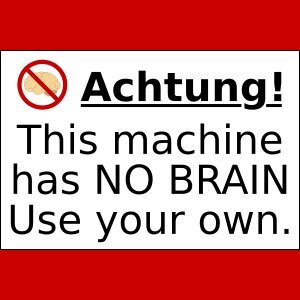So let’s take a random graph. You ever wonder what the the exact slope of a random angle is? Well with differentiation you can actually use maths to figure this out.
Normally you would take two points near each other, draw perhaps a line and see how close you can get. But at some point in time mathematicians started wondering if you can actually get the formula for the slope between two points where the two points are actually put over each other. And turns out you can!
This phenomenal discovery let to huge breakthroughs in maths as a whole. Including the discovery of integration. Which is in simple terms the opposite of differentiation. Only this time it’s not so much for the slope but the for the entire area of a graph. For if you reverse it you can actually get the exact size of a surface.
I had pretty terrible math education in school but as an adult I’ve gotten into programming and making video games and every time I learn a math concept I think “wow, math is even cooler than I thought” but the main part stopping me from learning some concepts is not having a practical example.
I vaguely know differentiation and integration… I think it might be the correct way to describe things like determining/applying acceleration to an object over time… but when I read your description I really don’t understand…
I think that’s in general what I run into with math. it’s cool and amazing when I get it, but a lot of the descriptions of concepts have a lot of assumptions about the reader sometimes to the point where to understand the description you’d have to already understand the concept.
🥵🥵🥵
here’s a different way to think about differentiation and integration (which are easier to generalize to other settings):
differentiation: lines are really easy to understand (they’re completely determined by two points), so wouldn’t it be nice if everything was a line? sadly, most things are not lines. but what if instead, we tried to approximate things using lines? i mean after all, if you zoom in really far when looking at the graphs of most common functions, they look kind of like a line, so it seems like it should work. and it does (for sufficiently nice functions)! and so, we define the derivative f’(x) of a function f to be the line that best approximates a function near some given number x. these approximations are typically quite good when considering numbers very close to x.
in higher dimensions, you don’t consider the best approximating line, but the best approximating linear function. this is a big reason why linear algebra is so useful and important: you can use calculus to turn complicated problems into linear ones, and then use linear algebra to solve those problems.
differentiation is also a good example of a way of thinking that starts to become prevalent in different parts of abstract math: the big picture of something may be quite complicated, but when you zoom in, and only look at small regions, things can be rather nicely behaved. here’s another example of this sort of concept: the earth. when you look at it in its entirety, it’s spherical (complicated). but when you look at things locally (e.g. if you only focus on one particular city), then that region is “basically flat”. this is in part why maps/GPS systems can work: you can put street directions on a flat piece of paper because that’s a decent way to approximate small regions of the earth.
integration: this one is admittedly a bit more contrived, but here goes. integration is basically a way to generalize the concept of measuring things. what does it mean to measure something? it depends :) but let’s consider a simple example: let’s say you counted how many pieces of fruit you ate each month and wanted to measure how many pieces of fruit you ate in a year. what would you do? add up the amount of fruit eaten each month. so this is the simplest kind of measurement: addition.
what if you (somehow) had information about how much fruit you ate from now until infinity. how would you measure the total amount of fruit eaten? this would be considerably more challenging. but there is one thing that will make this a tad easier: the heat-death of the universe. eventually, the amount of fruit eaten will start to decline. (fruit will be harder to find when there are no more stars.) so, after a certain point, the new terms added by future months will be negligible: they will barely affect your sum. and so, your tally of total fruit eaten will start to settle on a value as you add up more and more months. this kind of measurement is called infinite summation.
okay, but what if you (somehow) had information about how much fruit you’re consuming literally all the time. not just every second, but every possible moment. just non-stop fruit information. how would you measure how much fruit you’ve eaten on a given day? this is a bit tricker since you’re now trying to measure a whole continuum. so what do you do? approximate. you could start out by breaking the day up into 1 hour intervals and then approximate how much fruit you ate each hour. you then add up all those estimates and divide by 24 (basically take the average). you could then take finer and finer approximations (break the day up into half hour chunks, quarter hour chunks, then 5 minute chunks, 5 second chunks, etc, taking the average each time), and then see if a pattern starts to emerge. eventually (hopefully), you’ll see that past a certain point, these finer and finer approximations start to settle on a value. i.e., it seems like you’re reaching a point of diminishing returns, where better approximations start to result in smaller differences in your final measurement. the value that these subsequent approximations start to approach is called the integral.
it’s maybe worth mentioning that the symbol for integration is a big squiggly S, for summation. and that’s because it’s really supposed to be a way to try to add up a bunch of things. in the case of adding up a finite number of things, you no longer need to approximate and you can just add them up directly.
💦
okay, but what if you (somehow) had information about how much fruit you’re consuming literally all the time. not just every second, but every possible moment. just non-stop fruit information.
For a moment I wondered how you were going to switch from discrete to continuous using fruit eating… 🙂
in hindsight it might have been better to do that using smoothies or something. but explaining integration using fruits was a bit challenging
The girl’s facial expression always turns me down.
deleted by creator
She looks like she realy needs to pee.
( ͡° ͜ʖ ͡°)
I said it before and I say it again, infodumping is hot
if differentiation was as difficult as integration we would not have neural networks. that is the only thing you need to know.
Lol :P
I love calc.








